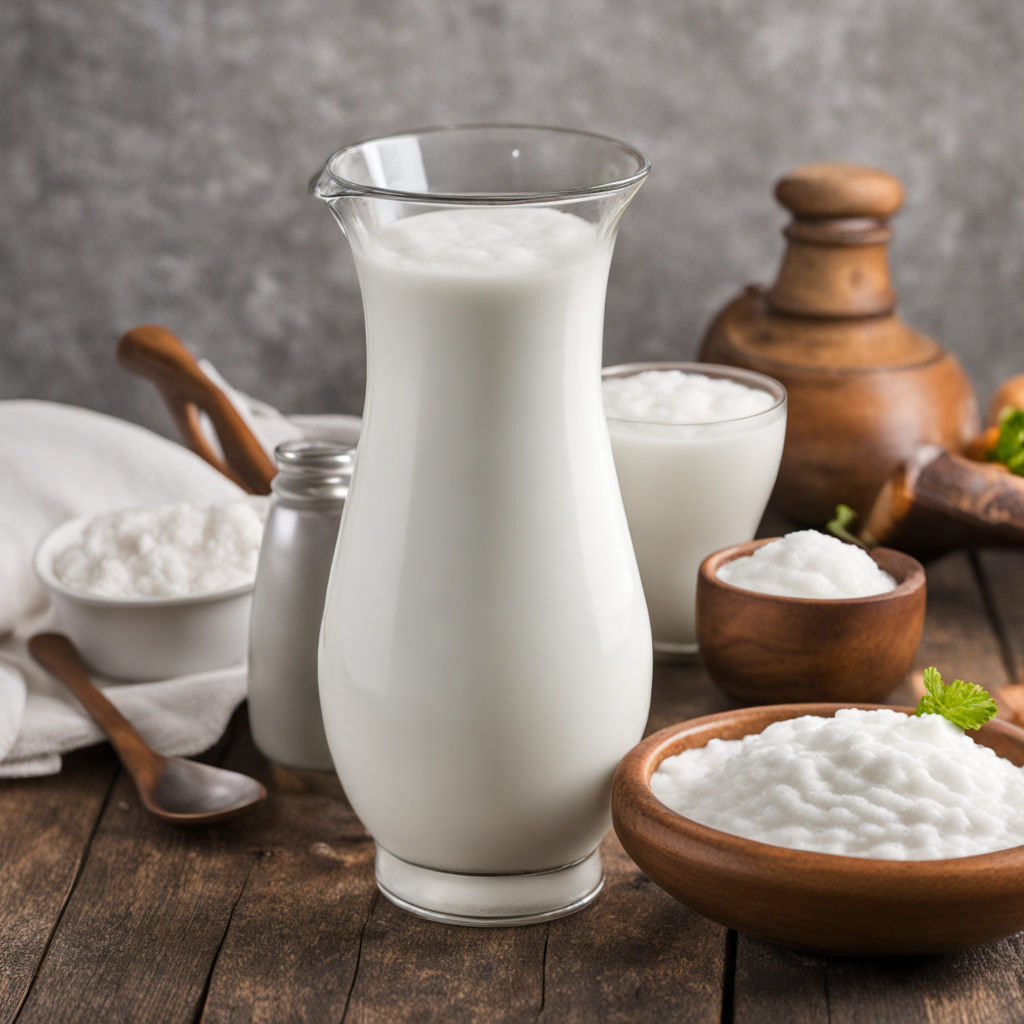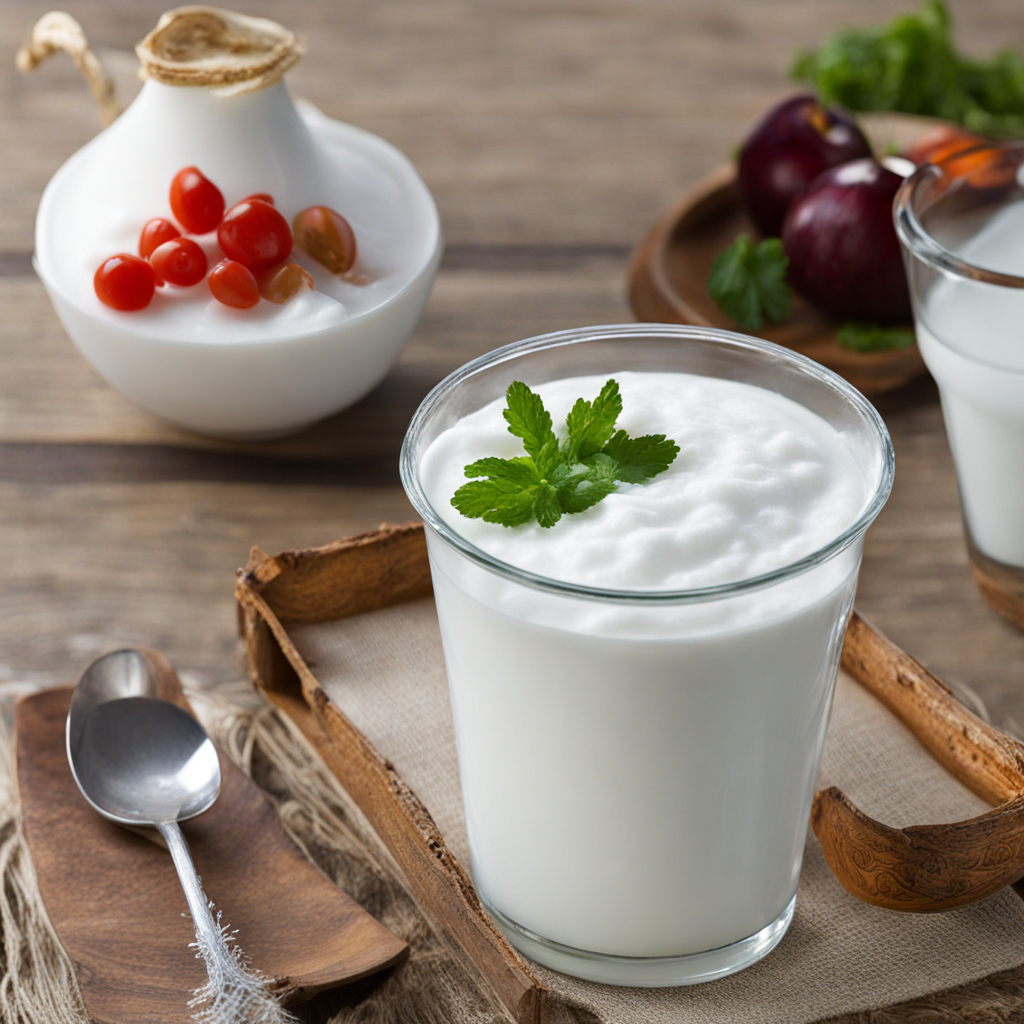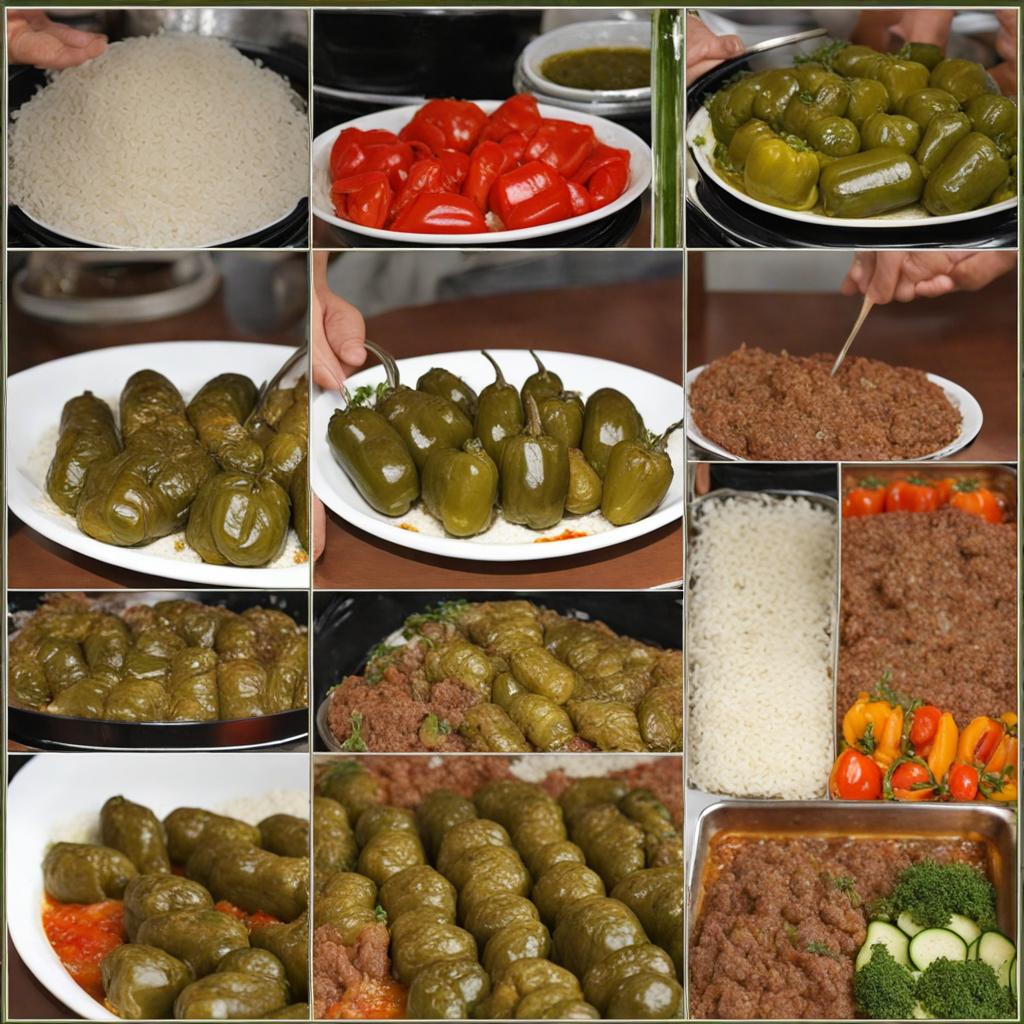Ayran
Ayran is a traditional Turkish beverage that beautifully encapsulates the essence of Turkish culinary culture. This refreshing drink is made primarily from yogurt, water, and a pinch of salt, resulting in a creamy yet tangy flavor profile that is both thirst-quenching and satisfying. The smooth texture of ayran, combined with its slight saltiness, makes it an excellent accompaniment to a wide variety of dishes, enhancing the overall dining experience. It is particularly popular during hot summer months, providing a cooling effect that is both refreshing and revitalizing. In Turkey, ayran is often served alongside flavorful kebabs, grilled meats, and hearty rice dishes, where its lightness complements the richness of the food. The drink is typically enjoyed in a tall glass, and in some regions, it is even whipped to create a frothy top, adding an inviting visual appeal. The balance of yogurt's creaminess and the refreshing water makes ayran a versatile beverage that can also be enjoyed on its own, acting as a healthy alternative to sugary sodas or juices. For those looking to explore new flavors, ayran offers a unique sensory experience. The tangy notes from the yogurt paired with the subtle saltiness create a taste that is both comforting and invigorating. It is a popular choice among locals and tourists alike, often found at street vendors and restaurants throughout Turkey. As you sip this delightful drink, you'll not only quench your thirst but also dive into the rich tapestry of Turkish cuisine, making ayran a must-try for any food enthusiast.
How It Became This Dish
The Refreshing History of Ayran: Turkey's Beloved Yogurt Drink Ayran, a traditional Turkish beverage made primarily from yogurt, water, and salt, has a rich history steeped in the agricultural practices and culinary traditions of the Turkish people. This frothy, tangy drink is not just a staple on the tables of Turkey but also symbolizes the cultural and historical essence of a region where hospitality and communal eating are paramount. #### Origins The roots of ayran can be traced back to the nomadic pastoral cultures of Central Asia, where fermented dairy products were central to the diet of the Turkic peoples. The nomads relied on their herds of sheep, goats, and camels for sustenance, and they discovered that by fermenting milk, they could create a nutritious and easily transportable food source. The practice of making yogurt likely began around 5,000 years ago, and it is believed that ayran, as a byproduct of this fermentation, emerged soon thereafter. Historical texts suggest that ayran was consumed by ancient civilizations across the Middle East and Central Asia, with variations of the drink appearing in different cultures. In Turkey, ayran became particularly popular due to the country's favorable climate for dairy farming, which allowed for the widespread production of yogurt. This drink has transcended generations, adapting to the tastes and lifestyles of the people while maintaining its core essence. #### Cultural Significance Ayran is more than just a refreshing drink; it holds a significant place in Turkish culture and cuisine. It is often served alongside meals, particularly with kebabs, pilafs, and mezes, complementing the rich flavors of the food. The drink's cooling properties make it particularly appealing during the hot summer months, and it is frequently enjoyed as a hydrating refreshment after strenuous activities, such as work in the fields or long journeys. In Turkish society, ayran represents hospitality and hospitality is an essential aspect of Turkish culture. Offering ayran to guests is a gesture of warmth and friendliness, demonstrating a host's generosity. It is common to see ayran served at family gatherings, celebrations, and even in public eateries, making it a communal experience that binds people together over shared meals. Furthermore, ayran has been embraced by modern Turkish society as a healthy beverage. With the growing awareness of the benefits of probiotics, the drink has gained popularity beyond traditional settings. Many Turks view ayran as a nutritious alternative to sugary drinks, making it a staple in homes, restaurants, and cafes. #### Development Over Time As Turkish civilization evolved, so did ayran. The Ottoman Empire, which spanned from the late 13th century until the early 20th century, played a pivotal role in the drink's development. The Ottomans, known for their culinary sophistication, included ayran in their royal feasts and everyday meals. The empire's vast expanse meant that ayran encountered various regional influences, leading to the creation of distinct variations across different areas. In the Aegean region, for instance, ayran is often made with a higher yogurt-to-water ratio, resulting in a thicker texture. In contrast, the Southeast may incorporate additional spices or herbs, reflecting local tastes. This adaptability has allowed ayran to thrive alongside other traditional beverages in Turkey, such as şalgam (fermented turnip juice) and boza (a fermented grain beverage). With the advent of modern technology and globalization, ayran has also seen a transformation in its production and marketing. Bottled ayran became widely available in the late 20th century, allowing for mass distribution and increasing its visibility in supermarkets and convenience stores. This commercialization has made ayran accessible to a broader audience, both domestically and internationally, as Turkish cuisine gains popularity around the world. In contemporary Turkey, ayran has also found its way into fusion cuisine, with chefs experimenting with flavors and presentation. Some may infuse ayran with fruits or herbs, creating innovative twists on the traditional recipe. However, despite these modern adaptations, the essence of ayran remains rooted in its historical and cultural context. #### Ayran in a Global Context As Turkish diaspora communities have spread across the globe, so too has ayran. It has found a place in international cuisine, particularly in countries with significant Turkish populations, such as Germany, the Netherlands, and France. In these regions, ayran often accompanies dishes like döner kebabs or is served in Middle Eastern and Mediterranean restaurants, attracting a diverse clientele. Ayran's global appeal can also be attributed to the increasing interest in fermented foods and drinks, recognized for their health benefits. The probiotics in ayran contribute to gut health, and its refreshing taste has made it a preferred alternative to carbonated beverages. Health-conscious consumers are drawn to its natural ingredients and simplicity, further solidifying its place in contemporary diets. #### Conclusion Ayran is more than just a drink; it embodies the history, culture, and culinary legacy of Turkey. From its nomadic origins to its status as a symbol of hospitality and community, ayran has evolved while remaining deeply connected to its roots. As it continues to be enjoyed in homes and restaurants around the world, ayran serves as a reminder of the rich cultural tapestry that defines Turkish cuisine. In an age where food can connect people across borders, ayran stands out as a testament to the enduring power of traditional beverages. Whether enjoyed at a bustling street vendor or in a family home, every sip of ayran carries with it the stories of generations, the warmth of hospitality, and the refreshing spirit of a nation. As we raise a glass of this tangy, frothy delight, we not only savor its taste but also celebrate the vibrant history and culture it represents.
You may like
Discover local flavors from Turkey







